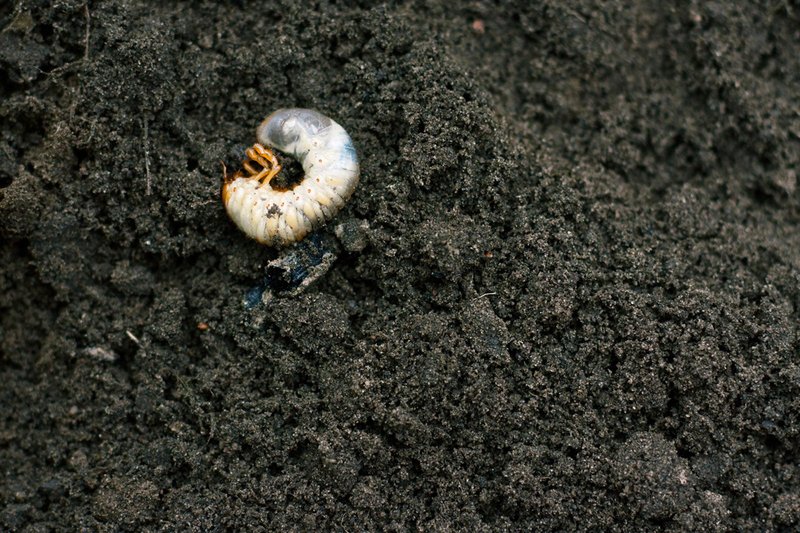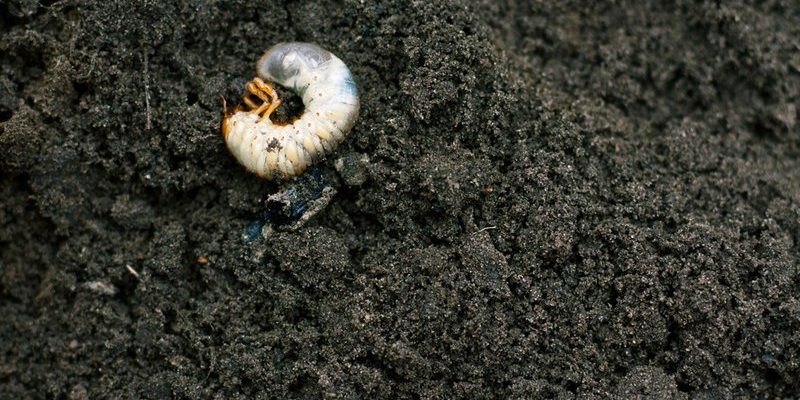
Let’s dive into what grub worms are, how they can impact your plants, and what you can do to tackle any issues they bring along. Picture it like a little detective story where the main suspect is hiding under the soil, and we need to uncover their secrets.
What Are Grub Worms?
Grub worms, also known simply as grubs, are the larvae of various beetles, like the Japanese beetle or June bug. They look like small, white, curled creatures that might remind you of tiny, wriggly maggots. These worms typically live in the soil, where they have an insatiable appetite for organic material.
These little creatures thrive in warm, moist conditions, making the soil of your potted plants a perfect feast. Their diet mainly consists of roots, which can be particularly destructive. Since roots are essential for a plant’s survival—providing water and nutrients—grub worms can wreak havoc if their numbers grow unchecked.
You might be wondering, “How do I know if I have grub worms?” Well, if your plants are wilting, turning brown, or simply not thriving, it could be a sign that these little pests are at work beneath the surface.
Signs Your Plants Might Be Affected by Grub Worms
Identifying an infestation early is crucial in saving your potted plants. Here are some common signs to look for:
- Wilting Leaves: If your plant’s leaves look droopy and lifeless, it might be a sign that the roots aren’t getting enough water.
- Discolored Foliage: Brown patches or yellowing leaves can indicate stress, often caused by damaged roots.
- Stunted Growth: If your plant stops growing altogether or seems to lag in development, check the soil for grubs.
It’s good to remember that these symptoms can also be caused by other factors, like lack of water or disease. However, a combination of these signs in an otherwise healthy plant could indicate grub worms are the main troublemakers.
How Grub Worms Damage Potted Plants
Understanding how grub worms operate can help you anticipate their impact. As they feast on the roots, the plants become less capable of drawing water and nutrients from the soil. This nutrient deficiency not only affects growth but can also make the plants more susceptible to diseases.
Consider the roots as a plant’s lifeline. If they’re damaged, it’s like a person trying to function without food or water. It’s not pretty! Additionally, the damage can lead to soil erosion around the plant and could even compromise the stability of your potting soil.
If grub worms continue to thrive undetected, they could ultimately lead to the death of your plant. This is why early detection and action are key. You wouldn’t ignore a friend who’s struggling, right? So why let your plants suffer?
Preventing Grub Worm Infestations
Prevention is always better than cure, especially when it comes to gardening. Here are some practical steps you can take to keep grub worms at bay:
- Healthy Soil: Use high-quality potting soil that limits pests and diseases. Look for mixes that contain beneficial nematodes or other natural deterrents.
- Regular Monitoring: Check your plants regularly. A quick soil inspection can help catch any pest issues before they escalate.
- Companion Planting: Some plants naturally deter grubs. For instance, planting marigolds can help keep many pests, including grubs, away from your pots.
By integrating these steps into your gardening routine, you can create an environment that’s less inviting for grub worms. Think of it as setting up a neighborhood watch for your plants!
How to Treat Grub Worm Infestations
If you discover that grub worms have already made themselves at home in your pots, don’t panic. There are several ways to evict them:
- Soil Disruption: Gently removing the top layer of soil can expose grubs and make it harder for them to survive. Just be careful not to disturb the plant’s roots too much.
- Natural Pesticides: Products containing beneficial nematodes or diatomaceous earth can help. These options target grubs without harming your plants or the environment.
- Watering Techniques: Over-watering can sometimes wash away grubs. However, be careful not to drown your plants; it’s all about balance!
It’s essential to act quickly if you notice an infestation. Like weeds in a garden, the longer you wait, the more deeply entrenched they could become.
Understanding the Lifecycle of Grub Worms
To effectively manage grub worms, it helps to know their lifecycle. Grubs hatch from eggs laid by adult beetles, usually during the summer months. They’ll spend the following months burrowing into the soil, feeding on roots before transforming into beetles in the spring.
Once you understand this cycle, you can anticipate when they might become an issue. For instance, if you notice adult beetles buzzing around your plants in early summer, it could be time to be especially vigilant.
Grub worms usually spend about three years in the soil before maturing into beetles. So, if you manage your soil well and catch infestations early, you can significantly reduce their population over time.
Taking care of potted outdoor plants can be a fulfilling hobby, but it comes with challenges. Grub worms are just one of the many pests that can disrupt our green friends’ growth. By understanding their impact and knowing how to spot signs early, you can keep your plants healthy and thriving.
Investing time in prevention and learning how to manage any issues can make all the difference. Remember, just like friends, your plants need care and attention to thrive. So, take a deep breath, roll up your sleeves, and give your potted plants the best chance at growth. Happy gardening!

